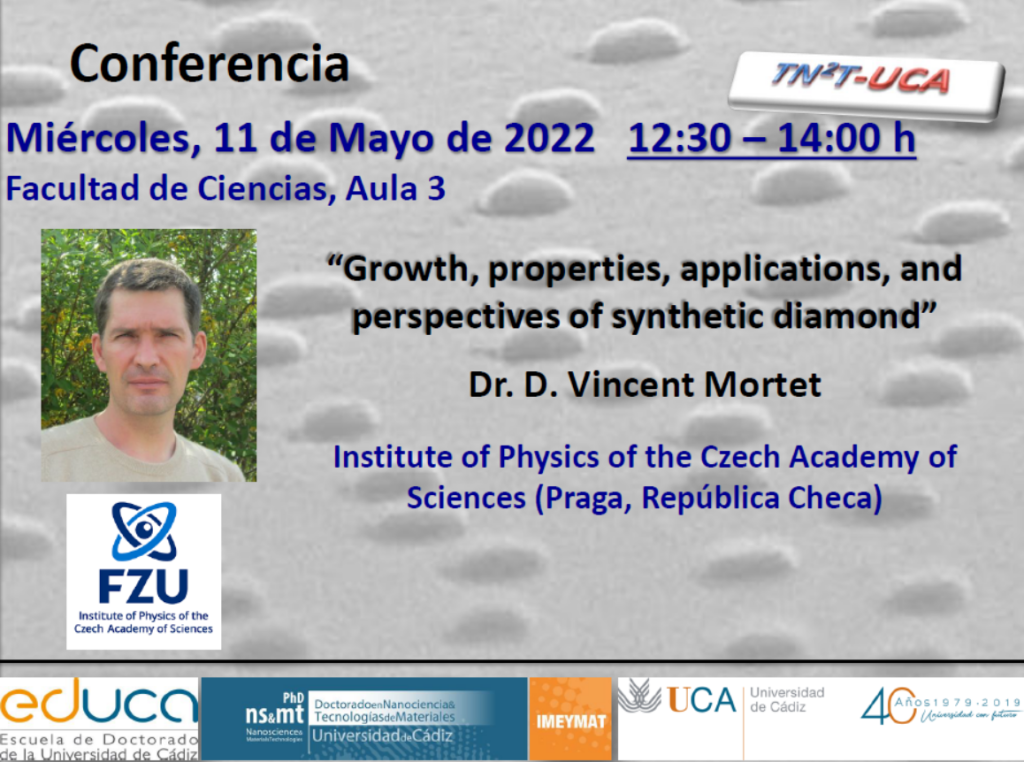Conference “Growth, properties, applications, and perspectives of synthetic diamond”-11/05 11 May 2022
Today, May 11, we were able to enjoy the conference “Growth, properties, applications, and perspectives of synthetic diamond” given by Dr. D. Vincent Mortet from the Institute of Physics of the Czech Academy of Sciences (Prague, Czech Republic). This conference belongs to the TNNT2022 course of the Doctoral Program in Nanoscience and Materials Technologies.
Dr. Vincent Mortet began his research career at the University of Valenciennes and Hainaut-Cambresis, France, in collaboration with LaBoMaP (Laboratoire Bourguignon des Matériaux et Procédés), Cluny, France, where he completed his doctoral thesis in 2001. Between 2001 and 2004 , worked as an associate researcher at the Materials Research Institute (IMO) of the University of Hasselt (Belgium) and at the Physics Institute of the Academy of Sciences of the Czech Republic, within the framework of the European Training Network project in Research “Diamond doped devices and sensors”. He continued to work at the Materials Research Institute until 2010. In 2011, he joined the Laboratory for Analysis and Architecture of Systems (LAAS-CNRS) in Toulouse. In 2013, he received a Purkyně scholarship from the Czech Academy of Sciences, and returned to the Institute of Physics, where he has taken over the leadership of the Materials Research Group for Nanosystems and Biointerfaces (MNB).
Dr. V. Mortet has studied the synthesis, properties and possible applications of thin films, in particular aluminum nitride, boron nitride, silicon carbide and diamond. These investigations cover physical and chemical vapor deposition methods, plasma characterization, evaluation of the structural, optical and electrical properties of thin films, microprocessing technologies, device characterization, as well as the development of deposition and characterization. He is best known for his work on making diamond-based surface acoustic wave devices. His current interest is in the synthesis of diamond layers (e.g. boron-doped epitaxial and polycrystalline diamond layers, porous diamond layers) and their electronic potentials at high electric fields and electromechanical applications (surface acoustic wave biosensors) and electrochemical.


